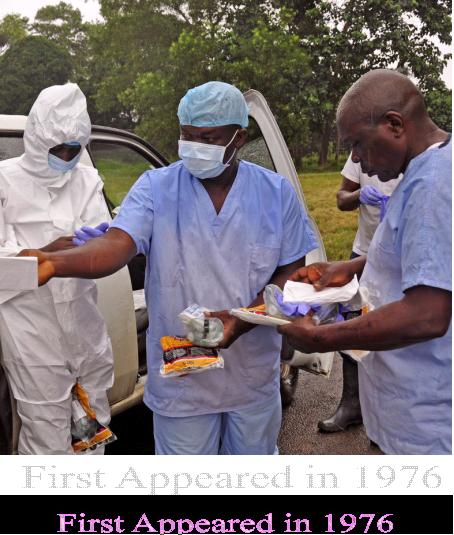
It has been compared to Bubonic plague and AIDS. Formerly referred to as Ebola hemorrhagic fever, Ebola virus disease (EVD) is a severe human illness that is often fatal. There has been quite a stir in recent news reports, and some might even say hysteria. With outbreaks in West Africa, and now cases reported in the United States, Ebola is one of the major topics on many evening news and talk shows. How much is known about this deadly disease varies from one country to the next, but the fact remains that millions in the U.S. know very little about it. Oftentimes, however, it is important to learn as much as possible about a thing in order to overcome our fears of it. Following is information about the history of Ebola, as well as what is being done around the world at present to control and potentially eradicate it.
According to the website of the World Health Organization (WHO), here are some of the key facts regarding Ebola:
- Ebola is transmitted to people from wild animals.
- Ebola spreads in humans through human-to-human transmission.
- The first Ebola, or EVD, outbreaks occurred in Central Africa’s tropical rainforests.
- The most recent outbreak of Ebola occurred in West Africa, both in rural and urban dwellings.
- The average fatality rate of the disease is approximately 50 percent; however, rates have varied from 25 percent to as high as 90 percent in past outbreaks.
- Early care that includes rehydration and symptomatic treatment improves a patient’s survival rate.
EVD first appeared in 1976 during two outbreaks that occurred simultaneously. One of these was in the Sudan. The other occurred in a village in the Democratic Republic of Congo (then Zaire) that lies near the EbolaRiver, from which the disease’s name was derived. These outbreaks reportedly were quickly contained. They affected 318 people and resulted in the deaths of 280 of these patients. The 1976 surge of the disease was traced to contaminated hospital needles. Reports state that only five syringes were used daily to treat all patients. The hospital was closed, and the outbreak was contained quickly thereafter. However, reports also include the fact that community behaviors changed during this outbreak, to which scientists greatly attribute the relatively swift containment of the disease. For instance, traditional burial practices were changed, and this often stopped uncontaminated people from contracting Ebola from those who had already died from it. Today, some of the same scientists who worked to contain the first outbreaks are weighing in again in order to contain its spread.
Since September 2014, the latest outbreak of Ebola has infected more than 7,400 people, and it has claimed the lives of more than 4,900, the WHO reports. The current outbreak that began in West Africa saw its first cases in March of 2014. This is reported as the largest and most complex outbreak of the disease since its discovery in 1976. In fact, the statistics of the WHO are that there have been more deaths involved in the current Ebola outbreak than all other occurrences combined. Additionally, the disease has spread across land borders to Liberia, Sierra Leone, Nigeria, Senegal, and now to the United States. It is important for all Americans to note that the areas that are the most severely affected are those countries that contain the weakest health systems and infrastructural resources. On August 8, the director-general of the WHO declared the latest Ebola outbreak a ‘Public Health Emergency of International Concern.’
As the medical and scientific communities work tirelessly to learn as much as possible about this deadly disease, including the best and most effective methods of controlling, preventing, and erasing its existence, there are things people can do to aid in its containment. The first step is raising awareness of the risk factors for Ebola infection. Individuals can take preventive measures in order to reduce human-to-human transmission. Some of these factors, according to the WHO, include:
- Wildlife-to-human transmission from contact with infected monkeys/apes or fruit bats and their consumption of raw meat should be reduced.
- Animals should always be handled with protective clothing, including gloves.
- All animal products should be thoroughly cooked before consumed.
- Protective clothing should be worn when caring for ill patients.
- Anyone who may have been in contact with someone infected by Ebola should identify him/herself or be identified.
If the only thing we have to fear is fear itself, it would stand to reason that fearing Ebola is not as effective a tool in fighting it as learning as much as possible about its history and prevention. Though an often fatal disease, like other diseases, Ebola can be controlled and erased. In fact, immunological and drug therapies are now under development, according to the WHO. Additionally, potential vaccines are undergoing evaluation. It is important for people to remember that there was a time when humans believed the Black Death would never cease. Today, the plague is a tragic note in history. Through the rigorous medical research currently being conducted, Ebola can prove to be the same.


